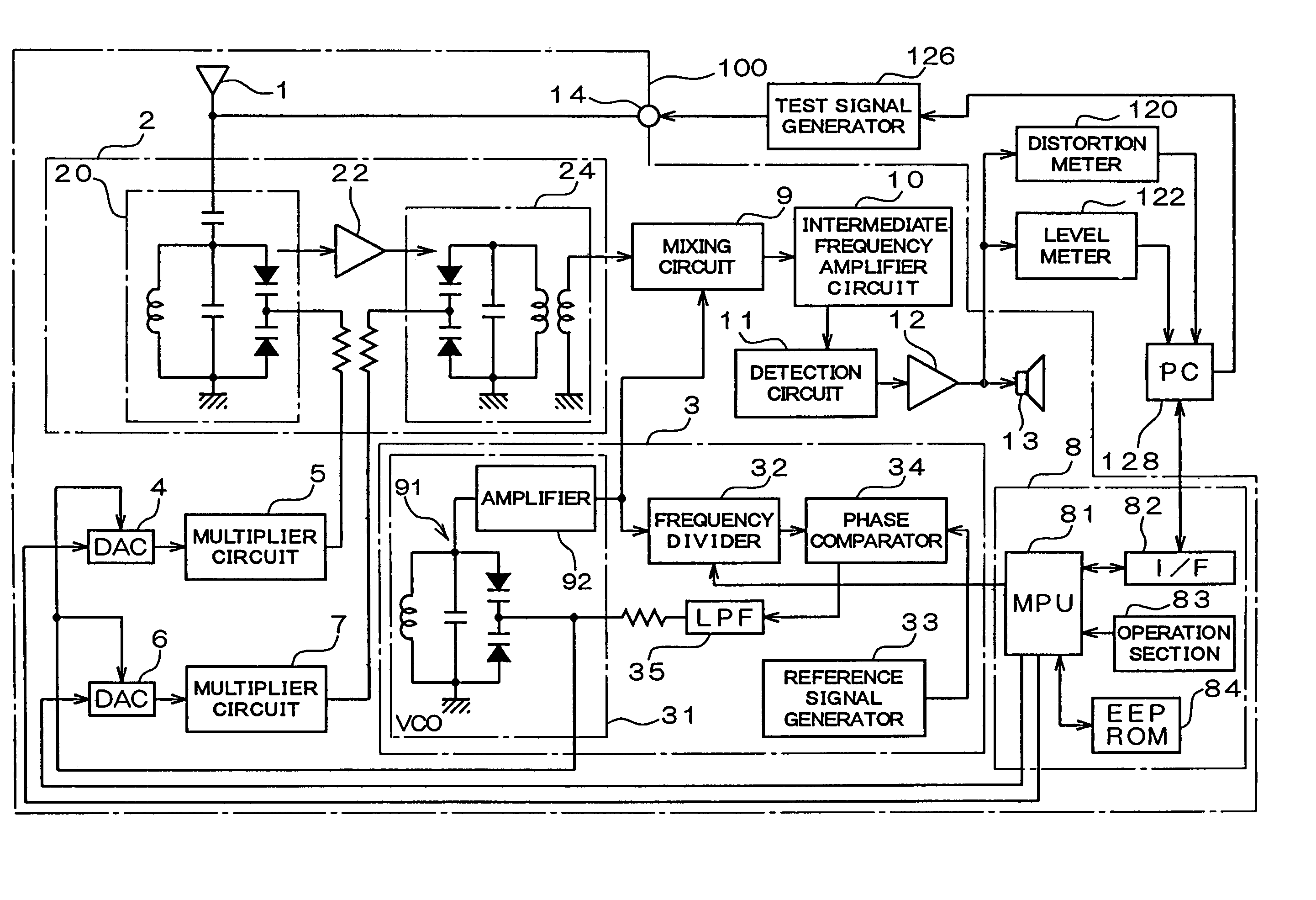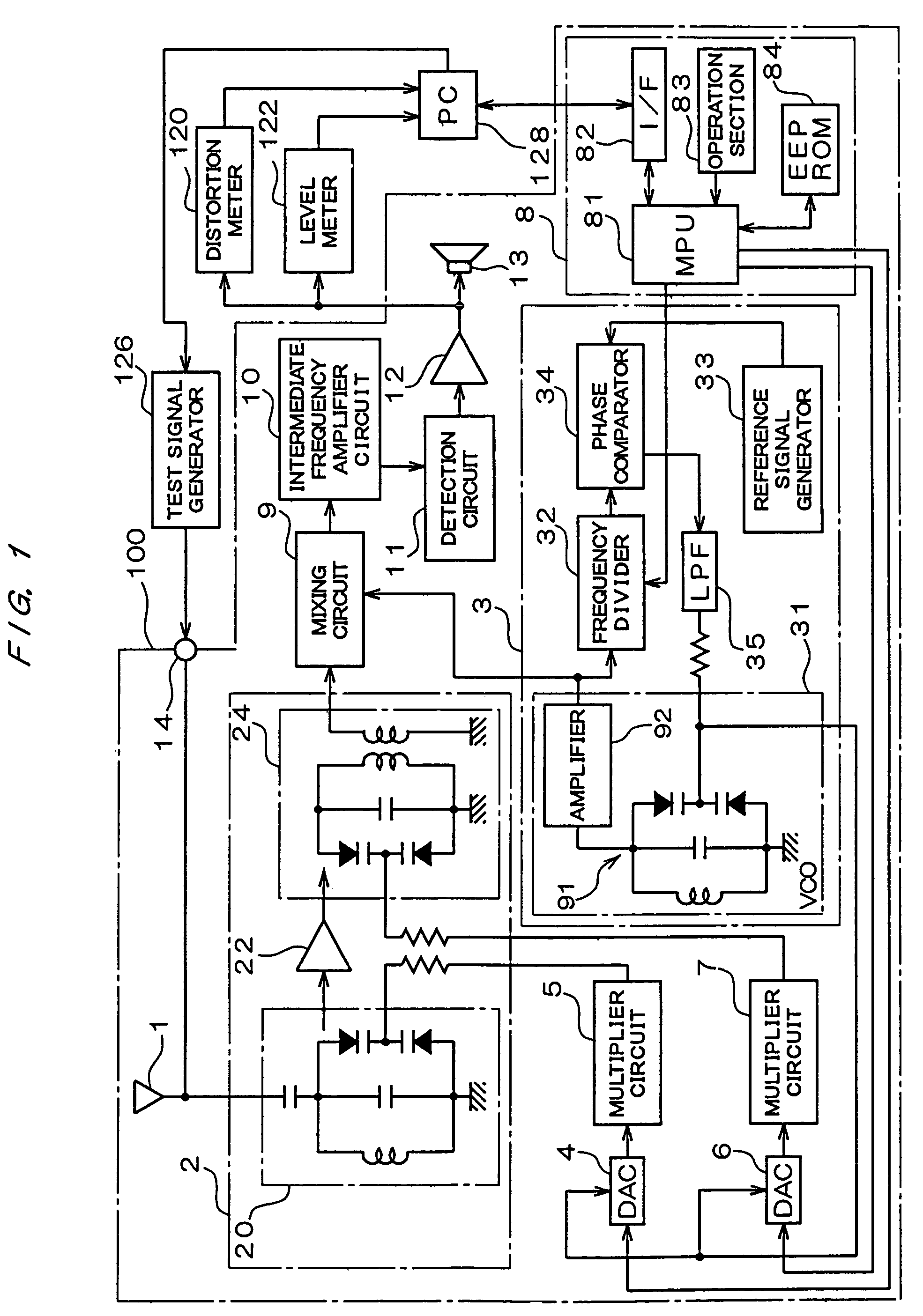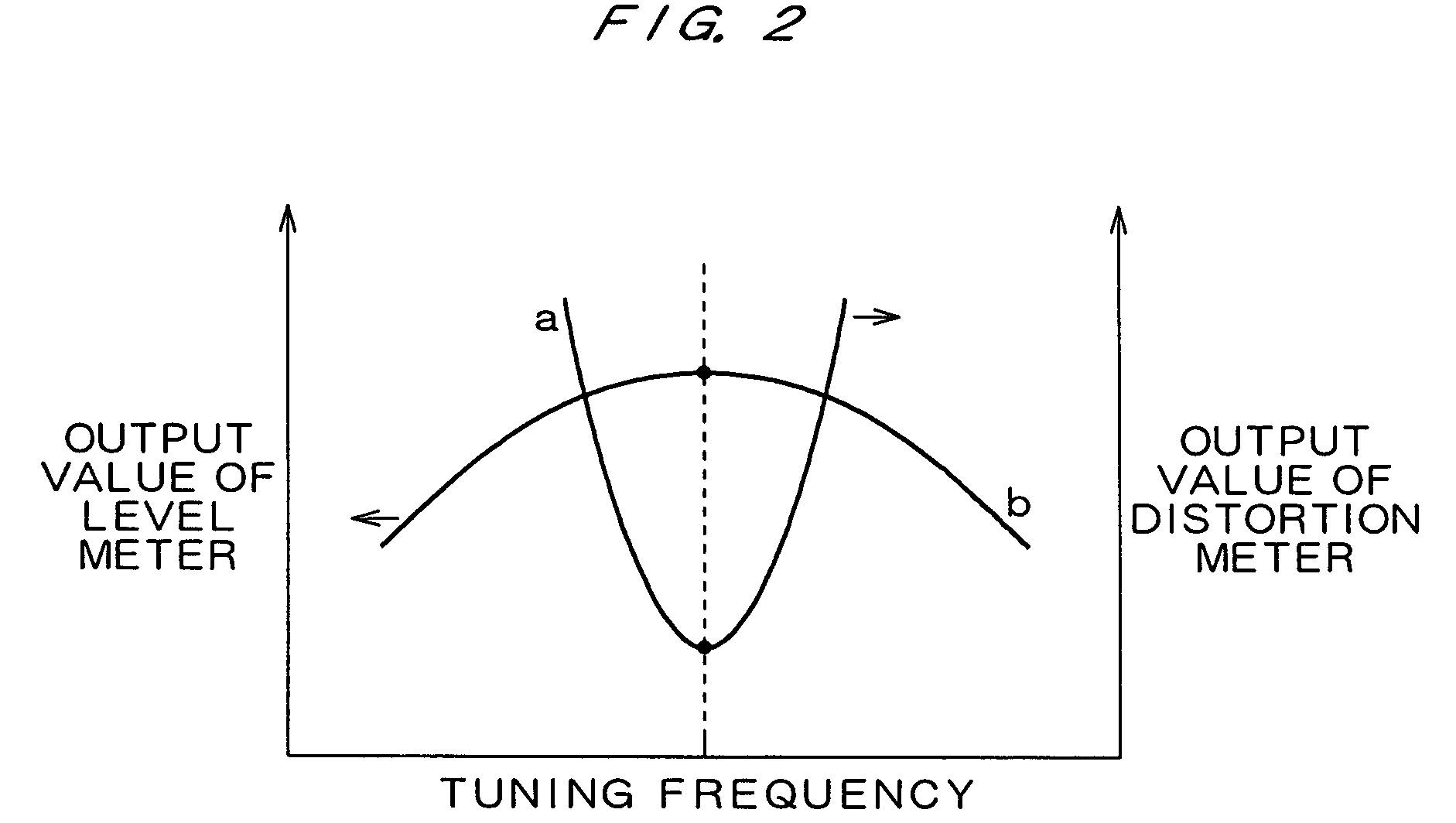Receiver and its tracking adjusting method
a tracking adjustment and receiver technology, applied in the field of receivers, can solve the problems of weak to the fluctuation of a supply voltage, difficult temperature compensation, time-consuming tracking adjustment, etc., and achieve the effect of optimal offset voltage, easy setting of offset voltage, and easy reduction of tracking error
- Summary
- Abstract
- Description
- Claims
- Application Information
AI Technical Summary
Benefits of technology
Problems solved by technology
Method used
Image
Examples
Embodiment Construction
[0031]Hereafter, an FM receiver according to an embodiment where the present invention is applied will be described with referring to drawings.
[0032]FIG. 1 is a diagram showing the structure of an FM receiver of this embodiment. An FM receiver 100 shown in this diagram is constituted by including an antenna 1, an high frequency receiving circuit 2, a local oscillator 3, two digital-to-analog converter (DAC) 4 and 6, two multiplier circuits 5 and 7, a control section 8, a mixing circuit 9, an intermediate frequency amplifier circuit 10, a detection circuit 11, a low frequency amplifier 12, and a speaker 13.
[0033]The high frequency receiving circuit 2 performs high frequency amplification of a signal after tuning while performing the tuning operation of selectively passing only a component near a predetermined tuning frequency to a broadcast wave inputted from the antenna 1, and is constituted by including two high-frequency tuning circuits 20 and 24, and a high frequency amplifier 22...
PUM
 Login to View More
Login to View More Abstract
Description
Claims
Application Information
 Login to View More
Login to View More - R&D
- Intellectual Property
- Life Sciences
- Materials
- Tech Scout
- Unparalleled Data Quality
- Higher Quality Content
- 60% Fewer Hallucinations
Browse by: Latest US Patents, China's latest patents, Technical Efficacy Thesaurus, Application Domain, Technology Topic, Popular Technical Reports.
© 2025 PatSnap. All rights reserved.Legal|Privacy policy|Modern Slavery Act Transparency Statement|Sitemap|About US| Contact US: help@patsnap.com



